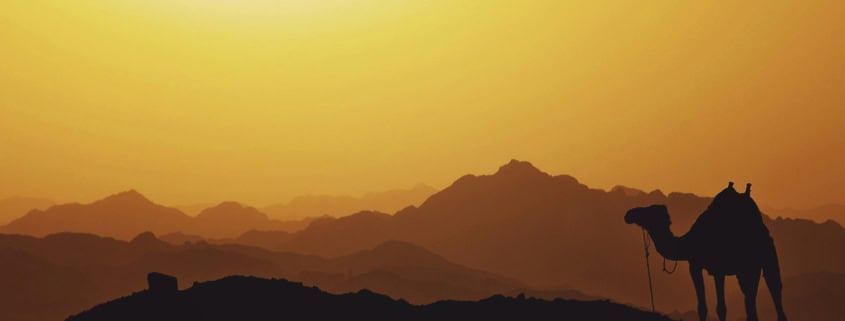Population Map of the Middle East: Density, Distribution & Demographic Patterns
The population map of the Middle East reveals one of the most diverse demographic landscapes in the world. It highlights areas of intense population concentration—especially in fertile river valleys and major urban centers—contrasted with vast sparsely populated deserts across the Arabian Peninsula.
While definitions of the “Middle East” vary, most geographic and cultural references include the Arabian Peninsula, the Levant, Egypt, Turkey, Iran, and sometimes North African neighbors when using the MENA (Middle East and North Africa) framework.
🌍 Understanding Population Density in the Middle East
A population density map uses color shading to show where people are concentrated:
-
Darker / deeper colors → higher population density
-
Lighter / pale colors → lower population density
This helps visualize how people cluster around:
-
Rivers (e.g., the Nile River in Egypt)
-
Coastal areas (e.g., Lebanon, Israel, UAE)
-
Urban hubs (e.g., Cairo, Istanbul, Tehran, Riyadh, Dubai)
Meanwhile, deserts and mountain regions have minimal populations.
📊 Most Populous Middle Eastern Countries (Approximate 2025 Estimates)
| Country | Population (Approx.) | Key Population Centers |
|---|---|---|
| Egypt | ~110 million | Cairo, Alexandria, Giza |
| Turkey | ~85 million | Istanbul, Ankara, Izmir |
| Iran | ~88 million | Tehran, Mashhad, Isfahan |
| Iraq | ~45 million | Baghdad, Basra, Mosul |
| Saudi Arabia | ~36 million | Riyadh, Jeddah, Dammam |
| Yemen | ~32 million | Sana’a, Aden |
| Syria | ~22 million (pre-war was ~21-23+) | Damascus, Aleppo |
Note: Populations shift due to migration, conflict, economic change, and census accuracy.
🏜️ Least Populous Middle Eastern States
| Country | Population (Approx.) | Notes |
|---|---|---|
| Bahrain | ~1.5 million | Highly urbanized island nation |
| Qatar | ~2.7 million | Large expatriate workforce |
| Kuwait | ~4.3 million | Small population, high GDP |
| Oman | ~4.5 million | Large land area but low density |
| Cyprus | ~1.2 million | Included in some Middle East definitions |
These countries are small in population, but many are major economic hubs due to natural gas and oil wealth.
🌾 Why Population Clusters Form Where They Do
| Factor | Impact on Settlement |
|---|---|
| Water sources (Nile, Tigris, Euphrates) | Densely populated fertile regions |
| Trade routes | Historic urban development (e.g., Istanbul, Beirut) |
| Oil and economic centers | Modern population growth in Gulf cities |
| Climate | Deserts discourage rural settlement |
Example:
Over 95% of Egypt’s population lives within 20 km of the Nile River, while vast areas of the Sahara have near-zero habitation.
🌐 Where to View High-Quality Middle East Population Maps
| Source | Type of Map | Link |
|---|---|---|
| World Atlas | Regional population maps & country profiles | https://www.worldatlas.com |
| Reddit — MapPorn Subreddit | High-resolution, user-generated population density maps | https://www.reddit.com/r/MapPorn/comments/17bv0zj/population_density_map_of_the_middle_east/ |
| Wikipedia | Demographic maps for Middle East & MENA region | https://en.wikipedia.org/wiki/Middle_East |
| World Bank Data (MENA) | Economic + demographic visual analysis | https://www.worldbank.org/en/region/mena |
These maps are updated frequently and are highly useful for research, teaching, journalism, and policy understanding.
📌 Key Insights
-
Population is not evenly distributed — dense cities contrast with uninhabited desert.
-
Egypt is the most populous country in the region (and in Africa).
-
The Gulf States have small native populations but large expatriate communities.
-
Urbanization rates are among the highest in the world, especially in the UAE, Qatar, and Israel.
-
Migration and conflict significantly affect demographic balance.

❓ Frequently Asked Questions (FAQs)
1. Which Middle Eastern country has the highest population?
Egypt, with over 110 million people, largely concentrated along the Nile River.
2. Why is population density low in Saudi Arabia and the Arabian Peninsula?
Most of the Arabian Peninsula is desert, making large-scale settlement historically difficult except near coasts and oases.
3. Why do major cities in the region grow so rapidly?
Economic hubs attract foreign labor, especially in Qatar, UAE, and Saudi Arabia, where expatriates make up significant portions of the population.
4. Which cities are the most populated in the region?
Cairo, Istanbul, Tehran, Baghdad, Riyadh, and Dubai are among the largest.
5. What does MENA mean?
MENA = Middle East and North Africa, a term used by the World Bank and UN agencies to describe shared regional economic and cultural links.
📚 References & Source Links
-
Reddit – Population Density Map of the Middle East
https://www.reddit.com/r/MapPorn/comments/17bv0zj/population_density_map_of_the_middle_east/ -
World Atlas – Middle Eastern Country Profiles
https://www.worldatlas.com -
Wikipedia – Middle East Overview
https://en.wikipedia.org/wiki/Middle_East -
World Bank – MENA Region Overview
https://www.worldbank.org/en/region/mena




